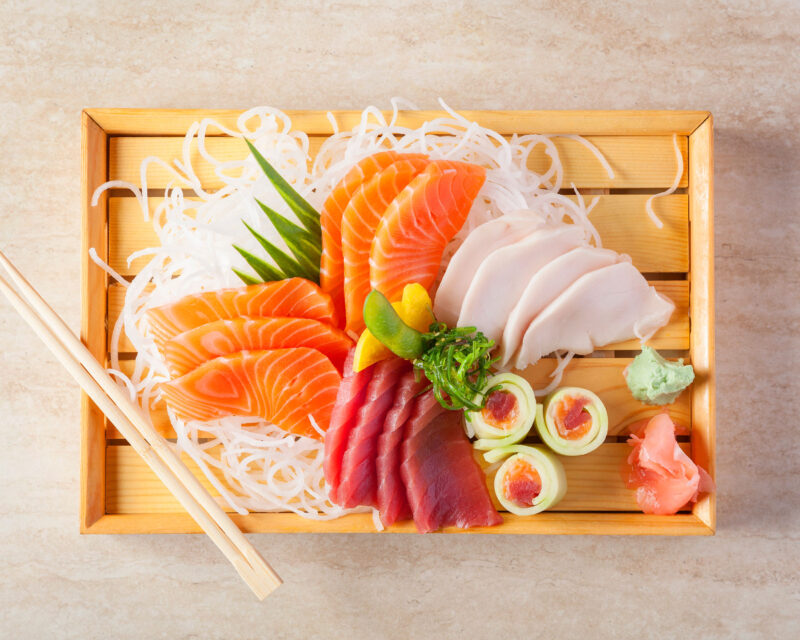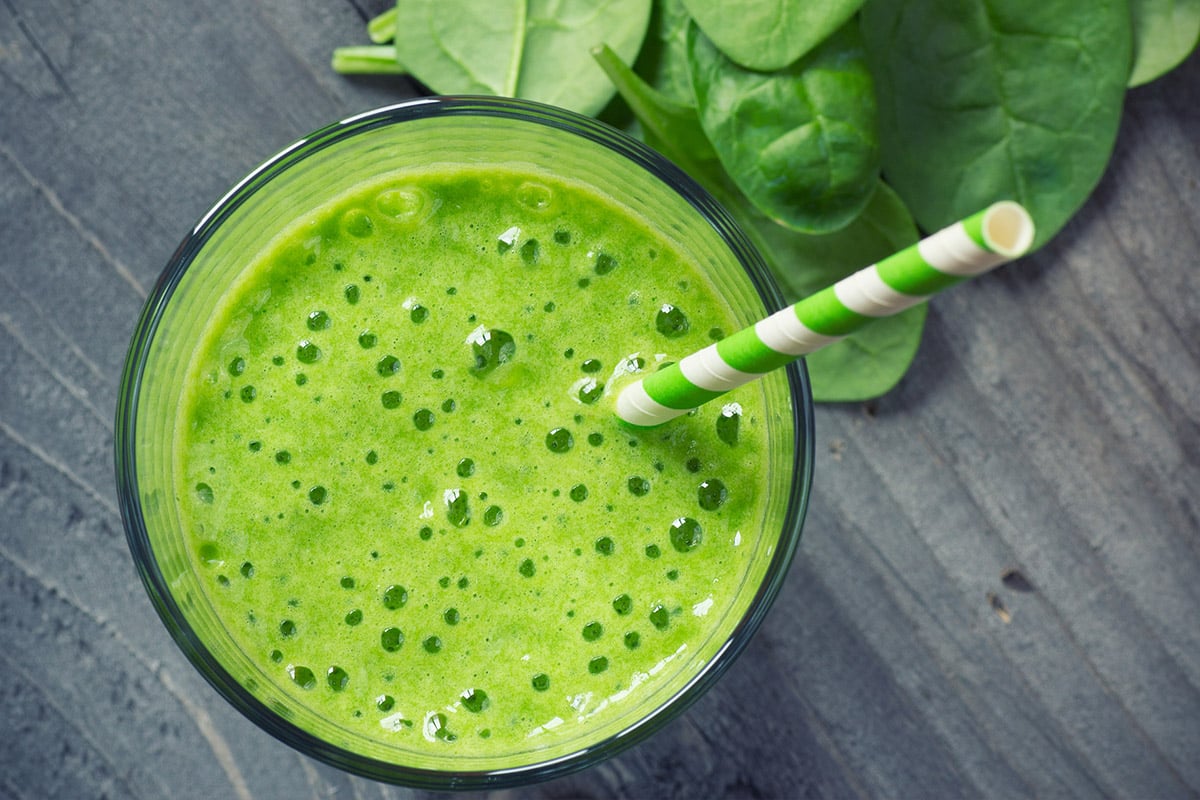Sushi offers an array of fresh fish and veggies that support metabolic health: Fish is full of lean protein and anti-inflammatory omega-3 fats, while veggies deliver fiber and micronutrients. But many times, these beneficial ingredients are rolled up in others that can wreak havoc on your blood sugar.
Although some people think sushi is synonymous with raw fish, its centerpiece is rice. In traditional Japanese cuisine, sushi is defined as cold vinegared rice garnished with raw or cooked seafood and vegetables. The rice can trigger a spike in blood sugar.
As sushi has exploded in popularity in the United States, the options have grown. Along with authentic sushi, there are fusion versions that blend in Western cuisine, such as deep-fried rolls and sugary sauces. Luckily, you can piece together a metabolically friendly order at most sushi restaurants—as long as you know what to order.
The Metabolic Challenge at a Sushi Shop
Traditionally, all sushi is made with rice. Some of the most common types of sushi are:
- Nigiri, which are pieces of raw seafood or egg placed on top of flatly pressed rice.
- Maki are rice and other ingredients rolled up in dried seaweed (called nori) and sliced into bite-sized pieces.
- Temaki, or handrolls, are meant to be eaten whole.
- Uramaki are inside-out versions of rolls with nori on the inside and rice as the outer layer.
The main problem with sushi is the amount of rice you wind up eating. Because sushi rice is patted down, a single roll can pack up to a third of a cup—or 12 grams of carbs. This is usually white rice, which is stripped of its fiber-rich germ and bran. Some rolls are made with brown rice, but according to Levels’ member data, even unrefined brown rice can cause glucose spikes in many people, causing an average of a 38 mg/dL glucose rise—a significant jump. Restaurants typically flavor their rice with vinegar, salt, and sugar. This added sugar combined with refined rice can set the stage for glucose spikes.
Beyond rice, there are other blood sugar boosters on the menu. Pay close attention to these offerings:
- Sauces and condiments: Many of these contain added sugars, additives, or refined seed oils, which may contribute to inflammation. For example, one tablespoon of a popular eel sauce packs 7 grams of sugar, or close to two teaspoons’ worth of table sugar. And sriracha mayo, which is often added to chopped tuna and salmon to make “spicy rolls”, is made with processed soybean oil.
- Tempura: In this Japanese dish, foods are dipped in a batter made with white flour (another refined grain) and deep-fried, usually in a processed seed oil.
- Imitation crab: A main ingredient in the popular California roll, this “crab” mainly consists of pulverized white fish, wheat starch, and added sugar. A quarter-cup of imitation crab serves up 8 grams of carbs and 2 grams of sugar.
- Seaweed salad: Wakame seaweed, the kind used in the stringy green salads served in sushi restaurants, is a nutrient powerhouse. It delivers a list of vitamins and minerals, including copper, magnesium, and iron. But restaurants often use a processed version for salads that’s made with sugar (roughly 5 grams per 3-ounce serving), sesame seed oil, and artificial food dyes. Ask your server how the restaurant makes its seaweed salad.
8 Steps to a Better Sushi Order
- Zero in on sashimi. You can’t go wrong with the simplicity of sashimi, which is thinly sliced seafood. It’s made without rice, making it a low-carb option compared to traditional sushi pieces or rolls.
- Skip the omakase. Not sure what to order? Your waiter may suggest the omakase. This Japanese word roughly translates to “I leave it up to you.” The chef chooses a series of dishes for a set price. Since you don’t get a say in what you’re served, chances are, you’ll wind up with a rice-heavy meal.
- Hold the rice. Some restaurants offer Naruto rolls, which use thin slices of cucumber instead of rice and seaweed sheets. Others can make sushi, especially handrolls, without the rice. Although these low-carb options are becoming more common at sushi restaurants, some restaurants may not accommodate your requests. Before dining out, call ahead to ask about the rice-free options.
- Select high-quality seafood. Fatty fish, such as salmon, tuna, and mackerel, are excellent sources of anti-inflammatory omega-3s. Order them, but avoid the “spicy” versions, which are often made with mayonnaise containing refined oils. Also skip tempura and imitation crab, which often contain white flour or added sugar.
- Be wary of sauces. Many popular sauces, such as eel, ponzu, and dynamite glazes and drizzles, contain added sugars. Soy sauce is sky high in sodium, with a single tablespoon serving more than 40 percent of the average recommended daily amount. Wasabi, the spicy green dollop, is a natural, low-carb choice when it’s freshly made from the wasabi root. But most Japanese restaurants use premade paste, which is often a blend of horseradish, high fructose corn syrup, other added sugars, and refined soybean oil. Stick with the traditional Japanese way of eating sushi: To heighten the flavor of the fresh fish, dip it sparingly in soy sauce.
- Start with miso soup. This common starter at sushi restaurants is made with dashi, a broth that’s usually made from seaweed, and miso, a fermented soybean paste. The soup contains probiotics, healthy bacteria that promote gut and metabolic health. Plus, miso soup often has tofu and seaweed for an extra dose of protein and nutrients.
- Add some veggies. Vegetables are high in fiber and micronutrients to support metabolic health. Check out the appetizers and side dishes for veggie-packed options. A smart start is steamed edamame, which are whole, immature soybeans in the pod. A cup serves up to 18 grams of protein and 8 grams of fiber, plus doses of folate, calcium, and iron.
Many restaurants also offer grilled vegetable options, such as eggplant, asparagus, and shishito peppers. And say yes to the salad, but go light on the dressing: Many are served with a ginger vinaigrette that contains a small amount of added sugar.
- Check out the appetizers and main courses. Want to stick with fish? Check out the grilled options, such as hamachi kama (grilled yellowfish collar), but ask about the preparation: They may douse the cuts in sweet sauces like teriyaki or ponzu. Some restaurants also offer poke, a Hawaiian dish that generally consists of raw seafood. You can often customize these bowls with seafood and vegetables.
If you don’t want fish, many sushi restaurants offer meat dishes that are high in protein and nutrients and low in carbs, which can help keep your blood sugar levels steady. Good options include negimaki (thinly sliced meat wrapped around scallions or asparagus) and yakitori (grilled chicken skewers).
3 Smart Sushi Shop Orders
Fill your sushi craving with one of these three orders, all of which can help keep your blood sugar levels steady.
If you want raw fish…
…order the sashimi meal with miso soup and salad.
If you’re in the mood for a roll…
…order the Naruto roll (made with thinly sliced cucumber instead of rice and dried seaweed) and edamame. Or ask for a hand roll made without rice—and extra veggies.
If you don’t mind meat…
…order the negimaki (meat wrapped around vegetables) with a side of shishito peppers.








